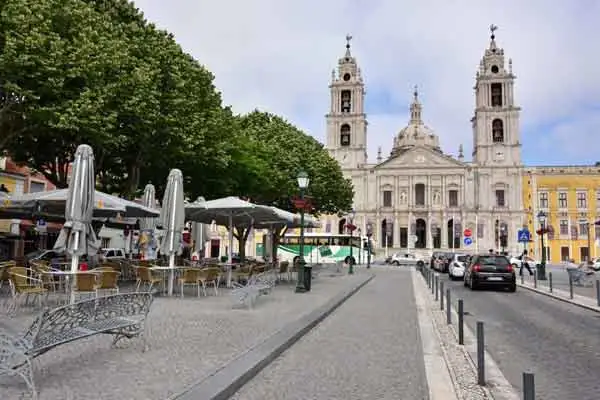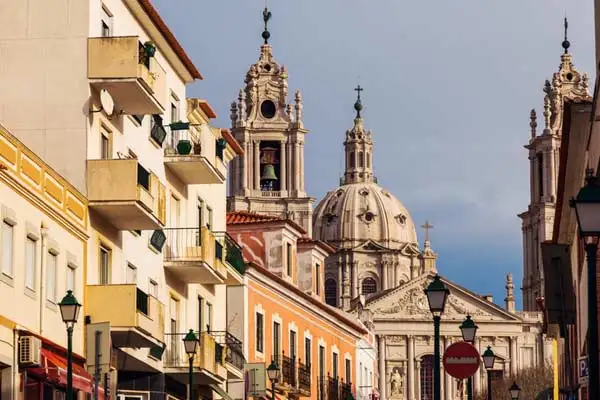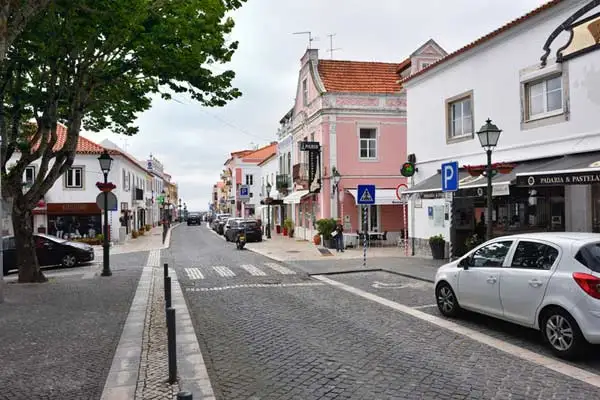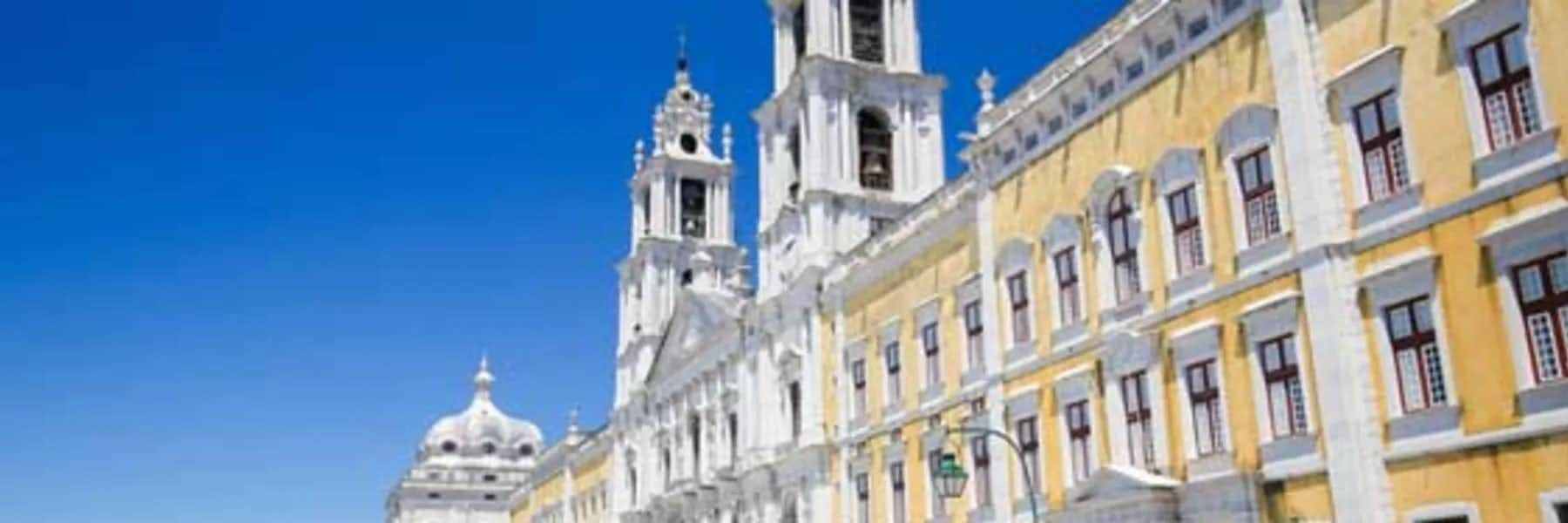When King João V began construction on the National Palace of Mafra in 1717, he created an enduring legacy. It remained a royal domicile until 1910, when King Dom Manuel II was forced to flee from it, with the establishment of the Portuguese Republic. Today the sumptuous Baroque and Neo-classical structure, more than 430,000 square feet in size, with a basilica modeled after St. Peter’s in Rome, stands as the elegant centerpiece of Mafra.
The town lies just 30 minutes northwest of Lisbon International Airport. A population of about 76,000 spread over 112 square miles translates to the feel of a thriving yet pleasantly-paced small city. Most of the tree-lined streets, including the main boulevard of Avenida da Liberdade, are covered with calçada Portuguesa, the traditional black-and-white Portuguese pavement. Green areas bursting with blossoms year-round are dotted everywhere, and on residential streets you’ll find private homes of varying sizes as well as apartment buildings.
Retire in Mafra

Tourists drawn to the National Palace provide a plus to the potential retiree: store owners and restauranteurs are facile with English. This is not necessarily the case in some places, like the correios, post office, but at banks, real estate agencies, the auto repair shop, health clubs—even McDonald’s—you’ll find you can get along quite nicely in English with a sprinkling of Portuguese.
Mafra is not the place to be if you’re the beachy type. But if you want to escape snow and sleet, yet still don’t want to give up seasons, this city may very well interest you. Summers are warm, dry, and mostly sunny. Winter is the rainy season, and you definitely need a coat. Having said that, average annual temperatures range from 46 F to 80 F, with extremes being 39 F and 91 F. One final note: due to its location on a rise, and proximity to the Atlantic Ocean, Mafra is often quite windy.
Several large supermarkets offer everything you need in the way of groceries and other necessities, and there’s a proliferation of clothing and shoe stores, a flower shop, bakeries, and a specialty meat market. The centrally-located mercado offers fresh, locally-grown produce.
With respect to safety, you may already know that Portugal was ranked the fourth safest country in the world according to the Global Peace Index in 2019. Healthcare is offered at a public clinic in town near the high school and sports complex, and private health care is easily attainable and affordable at CUF. A CUF Hospital is located about 30 minutes away in Torres Vedras. Finally, the volunteer fire department boasts well-trained Emergency Medical Technicians.
You won’t need a car here. A reliable bus service is available, and a taxi stand can be found in front of the lovely park, Jardim de Cerco, next to the Palace. Formerly the gardens where generations of royals strolled, today the park is home to the annual Bread Festival, music concerts, and other local events.
Lifestyle in Mafra

Mafra’s esplanade lies opposite the façade of the Palace. Filled with shops and restaurants, this is an arena where visitors and locals alike gather to visit and treat themselves to ice cream in spring and summer, and fragrant chestnuts from the vendor’s cart in cooler weather.
The Palace, cultural center, and music school all sponsor frequent concerts, plays, and other events. If you want to catch a current movie, you’ll have to travel a bit, but not far. A comfortable bus service operated by Mafrense departs regularly from directly in front of the National Palace, operating from approximately 7:00 a.m. until 10:00 p.m., arriving at the Campo Grande bus station in Lisbon. Express buses make the trip in about 40 minutes. Plan on 90 minutes for the slower service. The cost is $5.30 one way, $8.80 roundtrip. In Lisbon you can find cineplexes at major malls like Alfragide, Amadora, and the department store El Corte Inglés.
Take the bus in the opposite direction and at the end of the line you’ll find yourself in the former fishing village of Ericeira. Visitors come from all over Europe and elsewhere to experience the laidback atmosphere of this world class surfing reserve. Park yourself on a bench in the cozy town square for a while, grab a coffee at Café Central, and browse for beachwear or a hand-painted butter dish for your new kitchen. Before taking the bus back to Mafra, complete your day by viewing a glorious sunset at an oceanfront restaurant, savoring freshly caught grilled robalo paired with chilled white wine.
Another way to spend the day is to head to the enchanting Tapada de Mafra, the former royal hunting grounds for strolling, hiking, biking, and checking out local flora and fauna. Continue on just 15 minutes to the Iberian Wolf Recovery Center in Gradil before heading back to town for a quiet evening at home.
Cost of Living in Mafra

Dining out in Mafra, as in most of Portugal, is affordable. Whether you grab a sandwich at a local padaria ($6) or opt for fish soup, octopus, or steak at a popular restaurant like Adega do Convento ($40 for two with wine), your budget will not be strained.
Following is a breakdown of monthly costs for two people based on recent real estate listings and the usual budget costs which are fairly consistent throughout the country. Singles can expect to pay approximately two-thirds of the total figure at bottom.
Naturally the best way to decide about retiring in a particular location is to include it on a scouting trip. If you plan to visit Lisbon, you may want to think about not only the expat favorites of Cascais and Estoril, but the lovely town of Mafra.
| Rent (Two-bedroom, unfurnished, city center) | $725 |
| Utilities (Gas, electric, water, depending on season) | $150 |
| Internet/Telephone/Cell phones (x2)/Cable (Package) | $100 |
| Clothing and Miscellaneous | $350 |
| Maid (3 hours twice a week) | $55 |
| Groceries | $550 |
| Transportation: Mass transit/Tank of gas | $90 |
| Dining and entertainment | $400 |
| Total | $2,420 |
Featured Image Copyright: ©iStock.com/Jorivso












